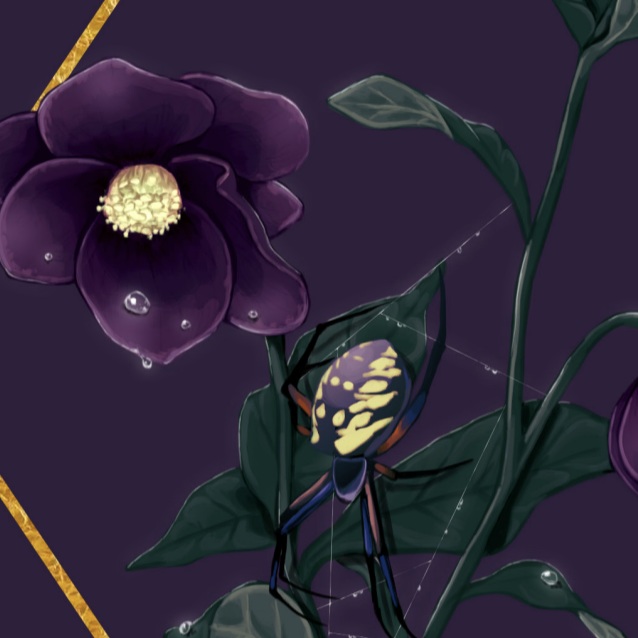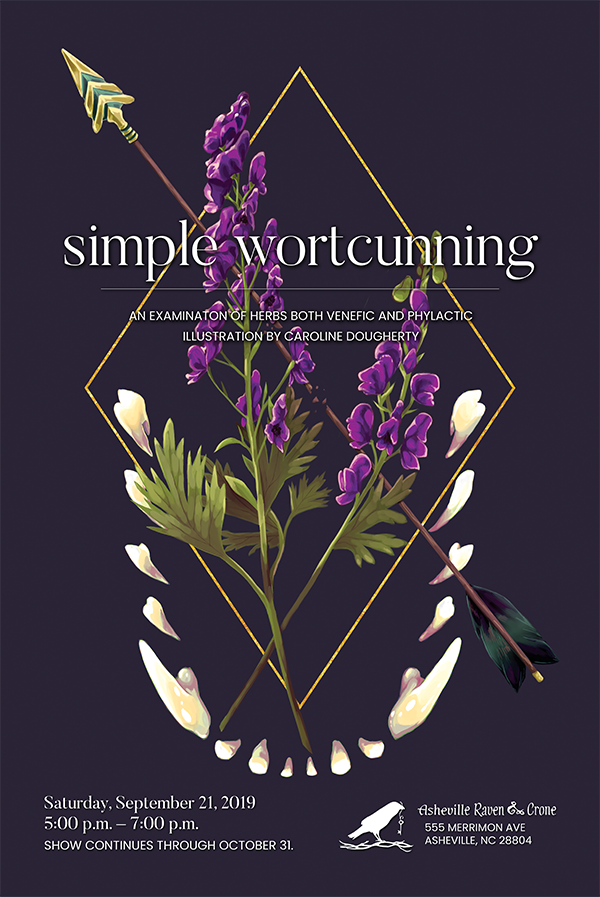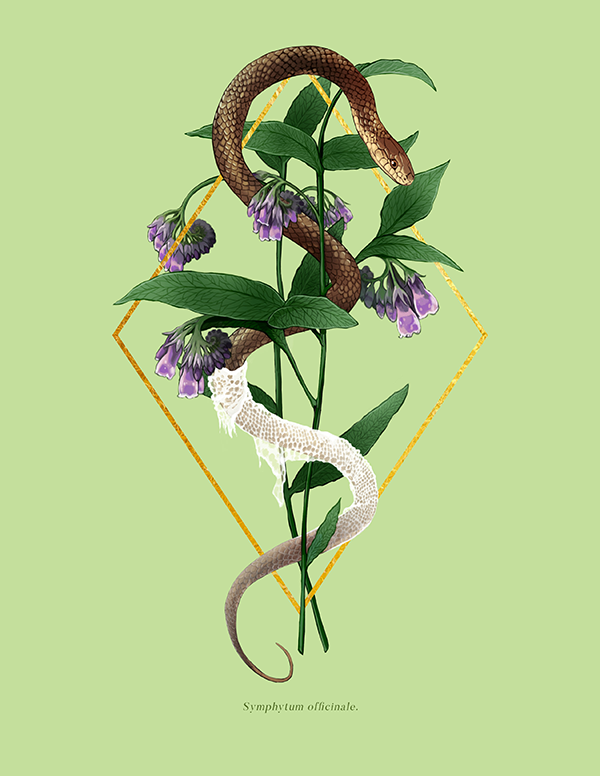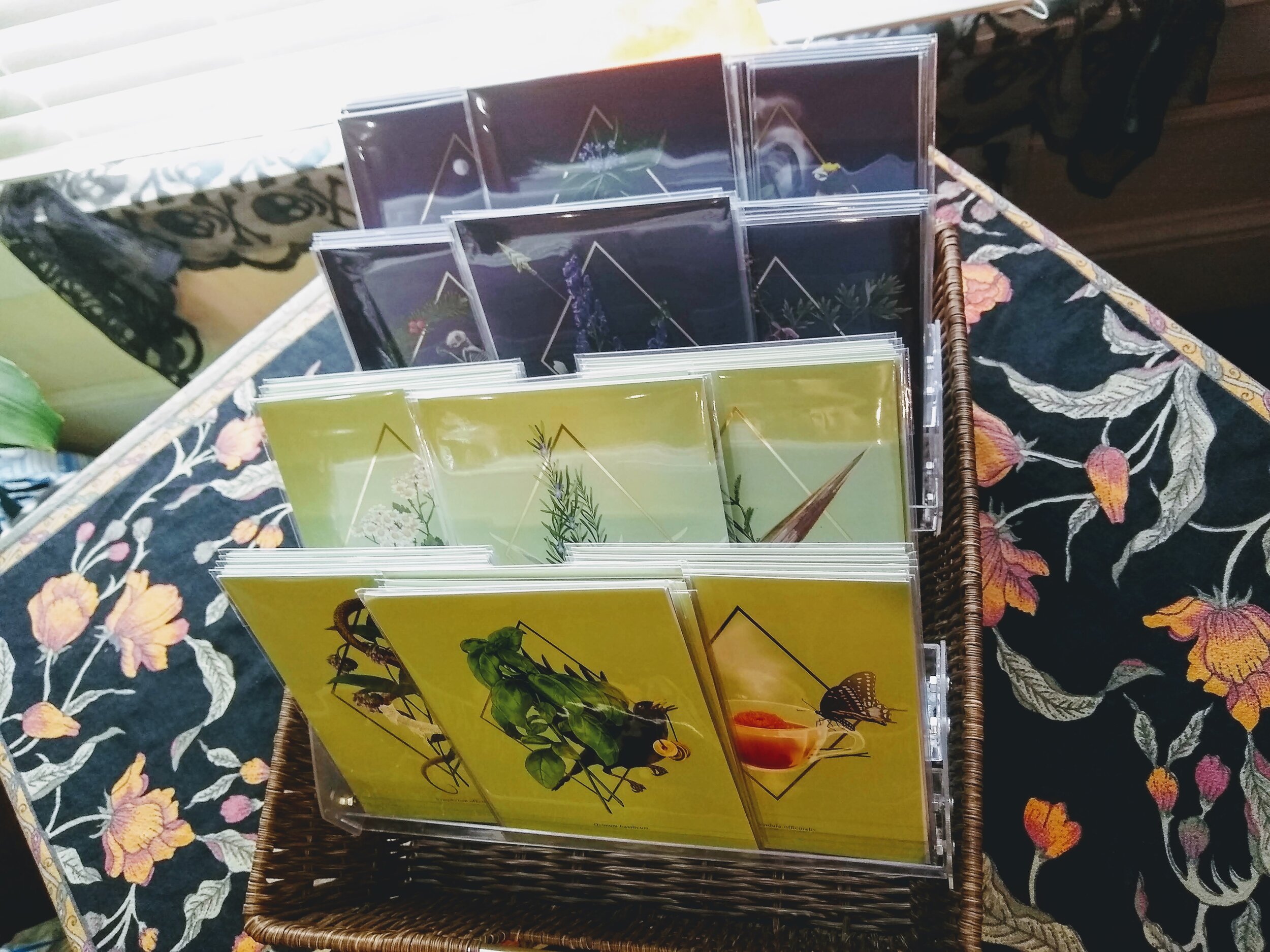
Simple Wortcunning
Solo show hosted at Asheville Raven & Crone, based around botanical illustration that examines wiccan lore surrounding certain plants, venefic (poisonous) or phylactic (medicinal).
simple (medicine)
n. A herbal preparation made from one plant, as opposed to something made from more than one plant.
wortcunning (uncountable) (archaic)
n. Knowledge of the medicinal uses of plants and herbs.



Hellebore
Helleborus niger
Also known as Christmas or Lenten rose. Its flowers may be a wide range of shades, including white, pink, yellow, and deep plum. Hellebore is associated strongly with water and, while highly toxic, was classically used as a cure for insanity. May be used in banishing and exorcisms.

Mandrake
Mandragora officinarum
Mandrake’s peculiarly shaped root is traditionally considered to echo the human form. An unsplit root is male, while a split root (more rare!) is female. Boil it in milk and use it in a poultice. The fruit is also known as “Satan’s apple” and is tempting to but causes poisoning in cattle.

Mistletoe
Viscum album
Mistletoe is a parasite, but classically symbolizes love and peace. Though the berries are toxic to humans, many birds eat them and spread the plant’s seeds through droppings. Burn mistletoe for protection, or fashion it into ritual tools for use alongside an athamé.

Wormwood
Artemisia absinthium
Sprang from the path of the serpent upon its exit from the Garden of Eden. Named for its historic purpose of curing intestinal worms. Used for protection and reflection of harmful energy. Here shown with garnet for protection and invocation of Mars and fire energy.

Wolfsbane
Aconitum variegatum
Also known as aconite or monkshood, owing to the shape of the bloom. A guardian of boundaries and protector against wolves. Invokes Hecate, goddess of magic, witchcraft, and the night. Ancient cultures used wolfsbane to coat their weapons; it was a classic poison of choice for ancient Romans.

Yew
Taxus baccata
Also known as common, European, or English yew. A sacred druidic tree that symbolizes death and resurrection. Common in funeral wreaths and memorial planting. Trees may live for thousands of years, and symbolize connection with ancestral spirits.

Calendula
Calendula officinalis
Also known as pot marigold, calendula embodies the sun. Traditional flower of love, meant to ward away evil. Calendula tea promotes healing, but it may be used in tinctures, supplements, and salves.

Comfrey
Symphytum officinale
Also known as knitbone. Traditionally used to treat sprains, bruises, fractures, and arthritis. The aesculapian snake symbolizes ancient medicine, and in shedding its skin it evokes revitalization.

Feverfew
Tanacetum parthenium
A field mouse for resilience, a horseshoe for luck. Planted at the threshold of your home, feverfew will protect you from illness and bad energy. Common for usage in mojo bags to prevent accidents. Repels insects and rats.

Rosemary
Rosmarinus officinalis
Evergreen in nature and used to enhance memory, attract love, and retain youth. Dispels evil spirits and nightmares. Deer shed their antlers every year, symbolizing adaptability and resilience. Christian folklore says rosemary flowers acquired fragrance and color from Mary’s cloak as she spread it across the plants.

Sweet Basil
Ocimum basilicum
Conjures wealth. A blackbird invokes good fortune. Lore from many cultures attaches basil to protection against pests and harmful energy. Also used in peacemaking and love spells.

Yarrow
Achillea millefolium
The first yarrow grew from rust scraped from Achilles’ spear; it is said he carried it with him always. The soldier’s herb, essential on a battlefield to treat wounds. A honeybee ties in the healing properties of honey. A lover’s knot pulls in the heart’s energy.




















